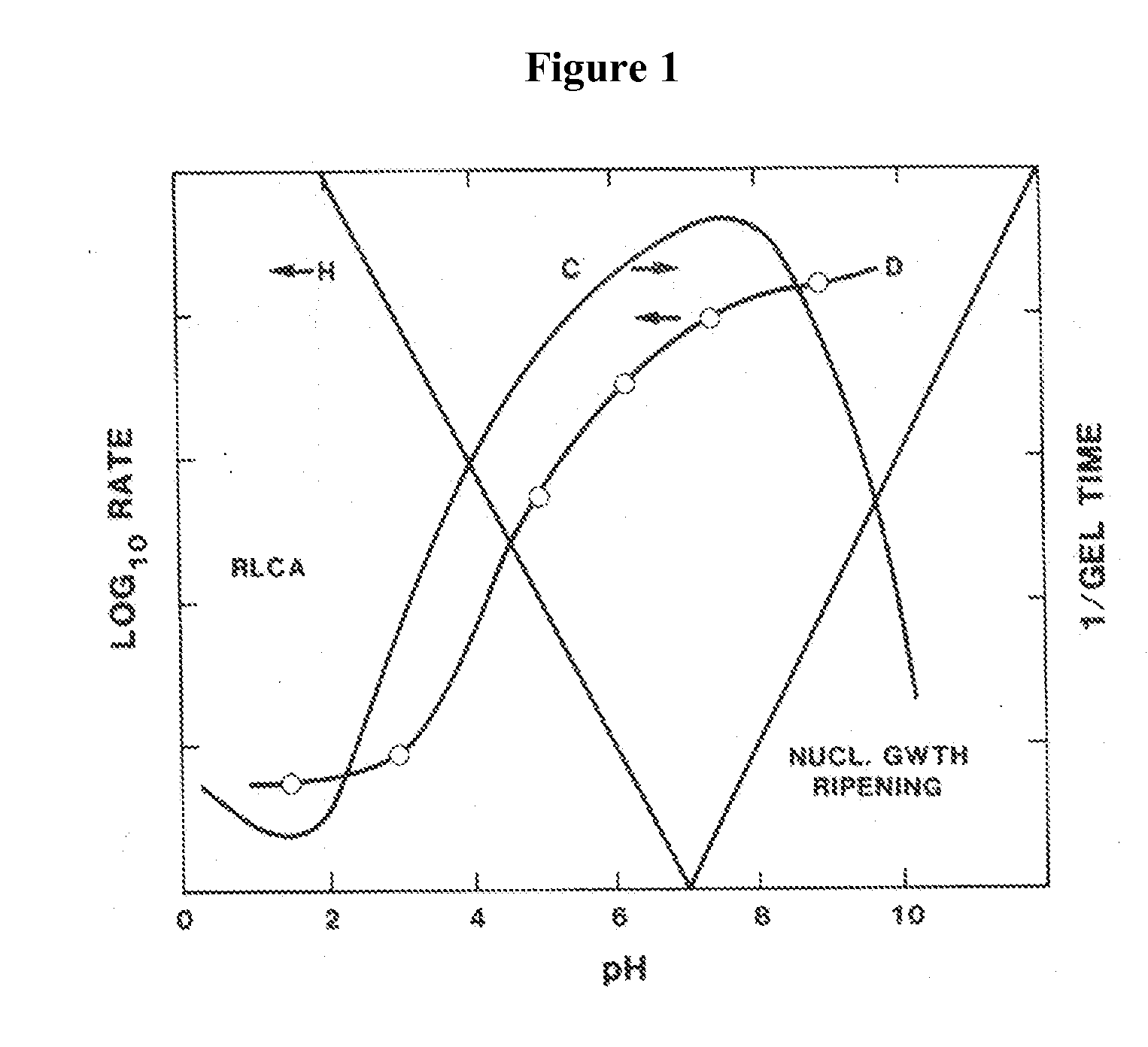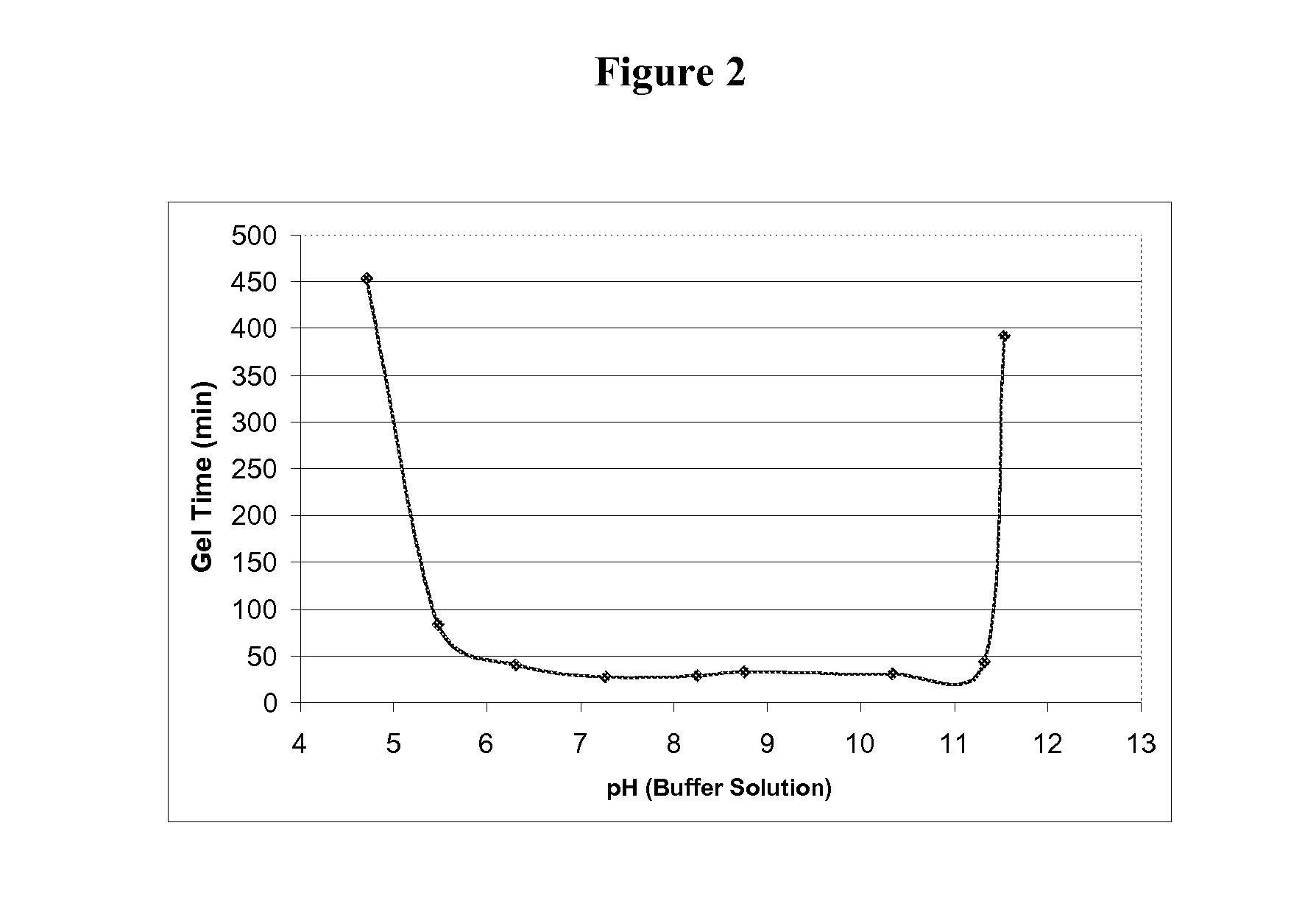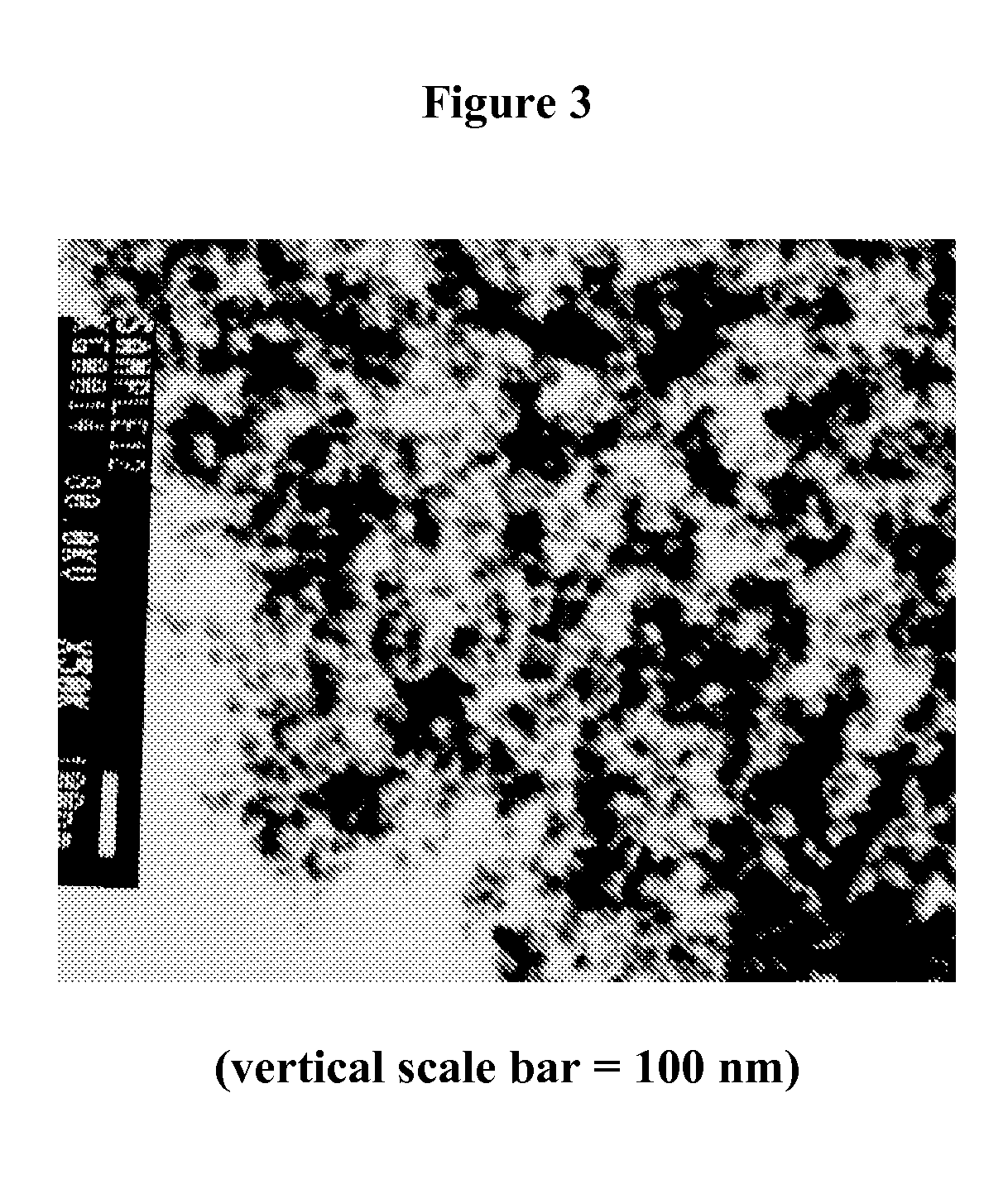Polyol-modified silanes as precursors for silica
a technology of polyol-modified silanes and precursors, which is applied in the field of silica and the preparation of silica from polyol-modified silanes, can solve the problems of inability to reproduce ph protocols, incompatible with protein stabilization, and insol-gel chemistry
- Summary
- Abstract
- Description
- Claims
- Application Information
AI Technical Summary
Benefits of technology
Problems solved by technology
Method used
Image
Examples
example 1
on of Glycerylsilane Silica Precursors
[0106] (a) Diglycerylsilane, DGS (Table 1)
[0107] In a 10 mL round-bottom flask was mixed neat, freshly distilled TEOS (2.08 g, 10.0 mmol) or TMOS (1.52 g, 10.0 mmol)) and glycerol (dried over and distilled from Mg, 1.84 g, 20.0 mmol). The mixture was heated with an oil bath at 130° C. for 36 h (TEOS) or at 110° C. for 15 h (TMOS) with a reflux condenser in place. Following this time, a stillhead was placed on a short path distillation column and the EtOH or MeOH produced, respectively, was distilled off. Complete removal of EtOH or MeOH and unreacted starting materials at 140° C. in vacuo gave DGS that was not contaminated with ethanol or methanol; similar results were observed with other glycerol:silicon ratios. The resulting DGS cannot be purified by normal chromatographic means—hydrolysis competes to form polyglycerylsilanes. The DGS was obtained after all unreacted alcohols were removed by distillation.
(b) Scale Up of (a) to 100 g
[0108] ...
example 2
on of Sorbitylsilane Silica Precursors
(a) Monosorbitylsilane, MSS (Table 2)
[0113] A DMSO (20 mL) solution of TMOS (1.52 g, 10.0 mmol) and sorbitol (1.82 g, 10.0 mmol) was heated at 120° C. for 48 h, during which, formed MeOH was distilled off. The reaction mixture was concentrated, then added to a large volume of CH2Cl2. The formed white precipitate was filtered off, washed with CH2Cl2, and dried at 110° C. in vacuo giving sorbityl silanes. If the final step was not utilized, 0-5% MeOSi remained in the MSS product. Similar results were observed at other sorbitol:silicon ratios.
(b) Alternative Procedure to MSS Avoiding DMSO
[0114] A neat mixture of TMOS (3.04 g, 20.0 mmol) and sorbitol (3.64 g, 20.0 mmol) was heated at 105° C. for 5 h until the mixture became homogeneous, then the temperature was increased to 120° C. for 30 h, during which time MeOH was distilled off. Completely removal of MeOH and volatile organics at 110° C. in vacuo gave MSS 3.70 g, (90% yield) that was not co...
example 3
on of Maltosylsilane Silica Precursors
(a) Maltosyldisilane MalS2 (Table 3)
[0118] A DMSO (15 mL) solution of TMOS (0.60 g, 4.0 mmol) and anhydrous maltose anhydride (0.72 g, 2.0 mmol) was heated at 110° C. for 48 h, during which time MeOH was distilled off. The reaction mixture was concentrated, then added to large amount of CH2Cl2, formed white precipitate was filtered off, washed sufficiently with CH2Cl2, dried at 110° C. in vacuo giving Ma1S2. Similar results were observed with different maltose:silicon ratios.
(b) Maltosyldisilane, MalS2 without Solvent
[0119] Maltose monohydrate (0.72 g, 2.0 mmol); TEOS (0.60 g, 4.0 mmol); Si:maltose 2:1, Reaction temp., 110° C.; reac. Time, 48 h, Yield, 68%; 13C CPMAS NMR (solid state) δ 51.3, 62.2, 73.2, 92.6, 96.5, 102.7 ppm; 29Si CPMAS NMR (solid state) δ−90.8 ppm; IR 3415s, 2927m, 2851w, 1464m, 1447m, 1412m, 1364m, 1320w, 1152s, 1081s, 1048s, 951w, 895w, 836m cm−1; appearance, white solid; residual OMe (by 1H NMR in D2O), 0%.
(c) Monoma...
PUM
| Property | Measurement | Unit |
|---|---|---|
| Temperature | aaaaa | aaaaa |
| Temperature | aaaaa | aaaaa |
| Temperature | aaaaa | aaaaa |
Abstract
Description
Claims
Application Information
 Login to View More
Login to View More - R&D
- Intellectual Property
- Life Sciences
- Materials
- Tech Scout
- Unparalleled Data Quality
- Higher Quality Content
- 60% Fewer Hallucinations
Browse by: Latest US Patents, China's latest patents, Technical Efficacy Thesaurus, Application Domain, Technology Topic, Popular Technical Reports.
© 2025 PatSnap. All rights reserved.Legal|Privacy policy|Modern Slavery Act Transparency Statement|Sitemap|About US| Contact US: help@patsnap.com



